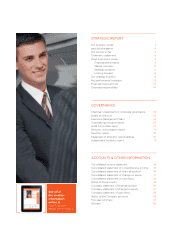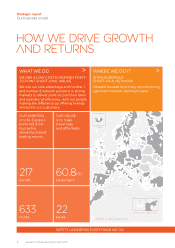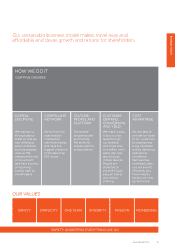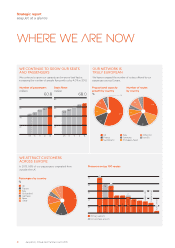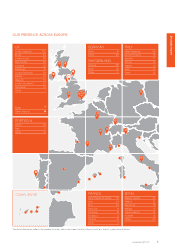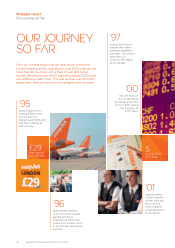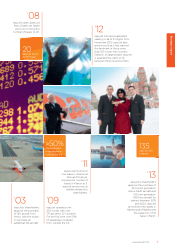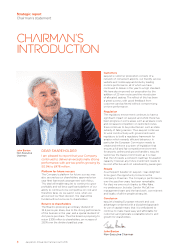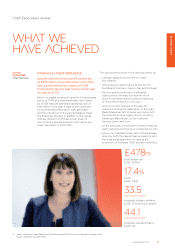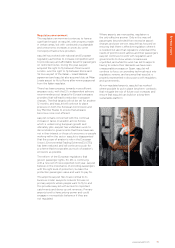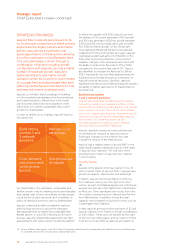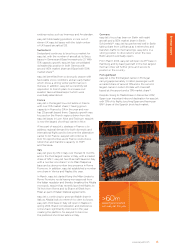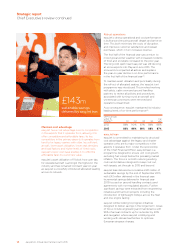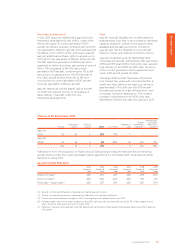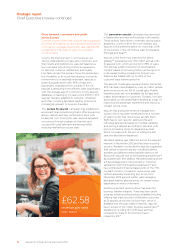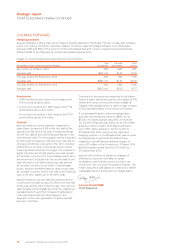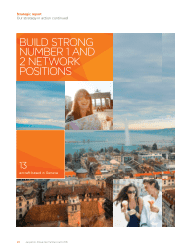EasyJet 2013 Annual Report Download - page 12
Download and view the complete annual report
Please find page 12 of the 2013 EasyJet annual report below. You can navigate through the pages in the report by either clicking on the pages listed below, or by using the keyword search tool below to find specific information within the annual report.
10 easyJet plc Annual report and accounts 2013
MARKET OVERVIEW
Competitive landscape
Around half of capacity in the European short-haul
market is flown by the five largest carriers: the three
largest legacy airlines Air France-KLM, Lufthansa
and IAG; and the two largest low-cost carriers
easyJet and Ryanair. In general, most of the profits
generated in the European short-haul market come
from the low-cost carriers, with the large legacy
carriers’ profitability being created predominantly
through premium long-haul traffic. There are a few
regional low-cost carriers, including Norwegian and
Wizz Air, with aggressive growth plans, whilst the
other, smaller network carriers tend to be loss
making, restructuring and seeking external sources
of finance (e.g. Alitalia).
In order to stem their short-haul losses, the larger
legacy carriers have been seeking to restructure
their cost bases to become more competitive. In
addition, larger legacy carriers have been seeking
to transfer traffic to their lower cost subsidiary
airlines. Air France-KLM is transferring regional traffic
towards HOP! and Transavia; Lufthansa is using
Germanwings and IAG launched Iberia Express and
Strategic report
Chief Executive’s review continued
has recently acquired the remaining stake in Vueling.
The majority of these initiatives are at the early
stages of development with lower levels of
customer awareness of the new low-cost brands.
As these transformations progress, there is a trend
towards the products converging: easyJet has
introduced allocated seating which has broadened
its customer appeal, whilst the legacies have
started disaggregating charges with bag fees
being imposed and new lower fare bands being
introduced on a limited range of seats to try
and improve their price perception.
There is evidence that the smaller legacy, regional
and charter operator models are under significant
pressure and this has led to new sources of
funding and restructuring. For example, Etihad has
continued its investment in Europe by acquiring
airberlin’s frequent flyer programme and a stake
in JAT/Air Serbia and Korean Air has purchased a
stake in CSA Czech Airlines. In addition, Flybe has
cut costs, restructured and sold its slots at Gatwick
to easyJet, Thomas Cook has restructured its airline
division, Alitalia is seeking investment and Aegean
and Olympic are in the process of merging their
businesses. Further consolidation cannot be
ruled out.
The smaller, emerging low-cost carriers have placed
large fleet orders and have started to expand from
their traditional bases; for example Norwegian has
started to expand out of Scandinavia and Vueling
out of Barcelona. easyJet has a competitive
advantage from its network driven by its portfolio
of scarce, early slots at congested primary airports,
which has taken a number of years to build up and
cannot be readily replicated. In addition, easyJet’s
pan-European brand enables it to fill the aircraft at
both origin and destination airports whilst other
brands have lower levels of cross-European
recognition and advocacy.
easyJet expects that legacy carriers will continue
to cut capacity from their unprofitable short-haul
operations but that there will be increased
competition from the new low-cost carriers looking
to expand. Whilst the benign capacity environment
is unlikely to continue in the short-term, there will
continue to be retrenchment by less efficient airlines
and therefore opportunities for easyJet to continue
to take profitable share in its core markets.
25
slot pairs at Gatwick
acquired from Flybe


